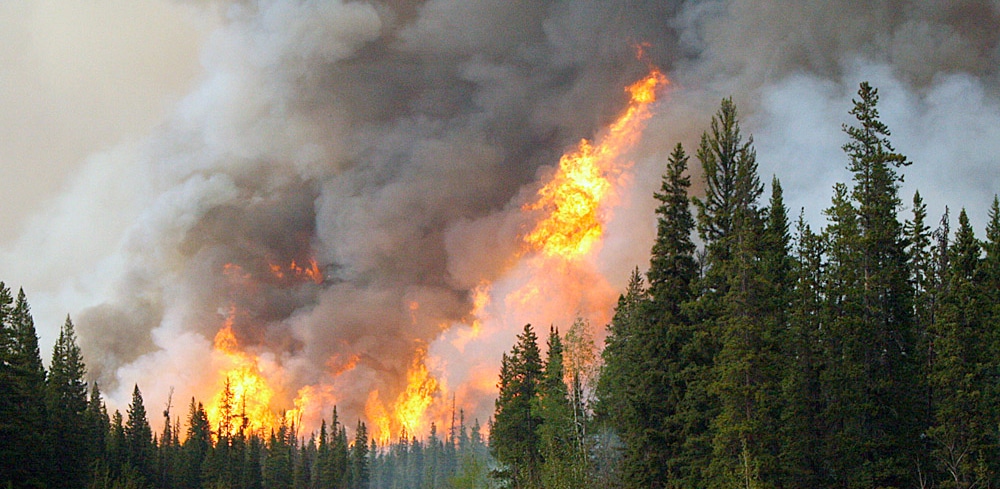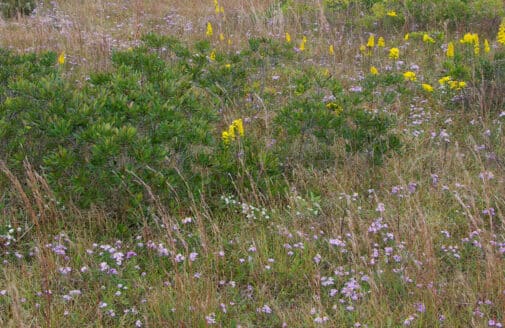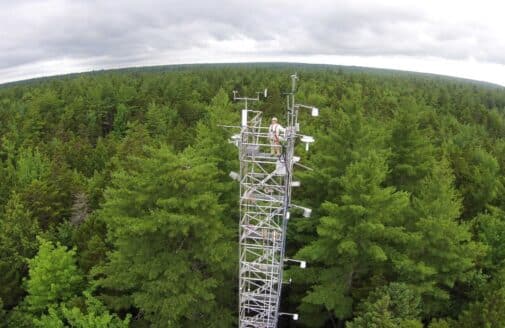Northern high-latitude wildfires and climate change
Above: Spruce fire in Kenai National Wildlife Refuge / U.S. Fish & Wildlife photo by Karen Murphy
DOWNLOAD PDF
Boreal forests comprise the largest terrestrial biome in the world, covering a wide swath of land across the northern hemisphere and bordering the treeless tundra to the north. Although the boreal region includes roughly 1/3 of all forests globally, boreal forests store approximately 2/3 of all global forest carbon. About 80–90% of this carbon is stored in the soil.
The tundra is a vast expanse located to the north of boreal forests, up to 75 degrees latitude, with low vegetation and large amounts of permafrost, or permanently frozen ground.
Tundra and boreal forests have historically acted as carbon sinks, which means they absorb or sequester carbon dioxide from the atmosphere.
Temperatures are rising worldwide due to climate change. However, the rise in temperature is disproportionately higher in the Arctic and northern latitudes, which are warming more than twice as fast than the rest of the planet. Although wildfires are naturally occurring events, global warming and longer dry periods have increased the number, extent and severity of fires in the boreal region. Fires have been rare on the tundra since the early Holocene. However, warming temperatures are increasing the frequency and extent of these fires, perhaps even more rapidly than in the boreal zone.
2014 fires in Canada’s Northwest Territories burned more than 7 million acres of boreal forest, mainly comprised of cone-bearing trees like these jack pines. The fires released nearly 104 million tons of carbon into the atmosphere.
The relationship between climate and fire in the North American boreal forests shows an increase in burned area historically. In North America, the area burned due to boreal wildfires has doubled since the 1970s. Wildfires influence the storage of carbon in boreal forests as well as tundra, both through immediate emissions and impact on soil carbon sequestration.
The soil organic layer is the top layer of partially decomposed dead mosses, lichens, leaf litter, and fine roots that accumulates in cold, moist conditions. During a wildfire, the severity of the fire is determined by the amount of soil organic layer burned during a fire, i.e., the depth of burn. The higher the depth of soil burnt, the more severe the fire.
According to recent projections, fires are expected to increase in size and severity, offsetting a large fraction if not all of the carbon gains due faster-growing vegetation from warming temperatures and CO2 fertilization. Boreal forests are becoming a net carbon source to the atmosphere for the 21st century. It should be noted that these projections do not include the interactions between fire and permafrost thaw.
Fires also raise the temperature of the soil. Increased soil temperatures may speed up decomposition rates, which releases greenhouse gases.
Arctic tundra landscapes store large pools of carbon in organic-rich surface soil horizons that have accumulated over millennia, which can be highly flammable when dry and may burn deeply. If tundra soils burn, increasing fire in this biome could rapidly transfer a substantive amount of carbon to the atmosphere, reducing landscape carbon storage, increasing atmospheric CO2 levels, and amplifying climate warming.
Higher temperatures in the tundra have increased productivity of arctic plants, increased shrub abundance, and created conditions that may be more favourable to lightning strikes. These changes may favour an increase in arctic wildfires, which have major impacts on landscape carbon budgets.
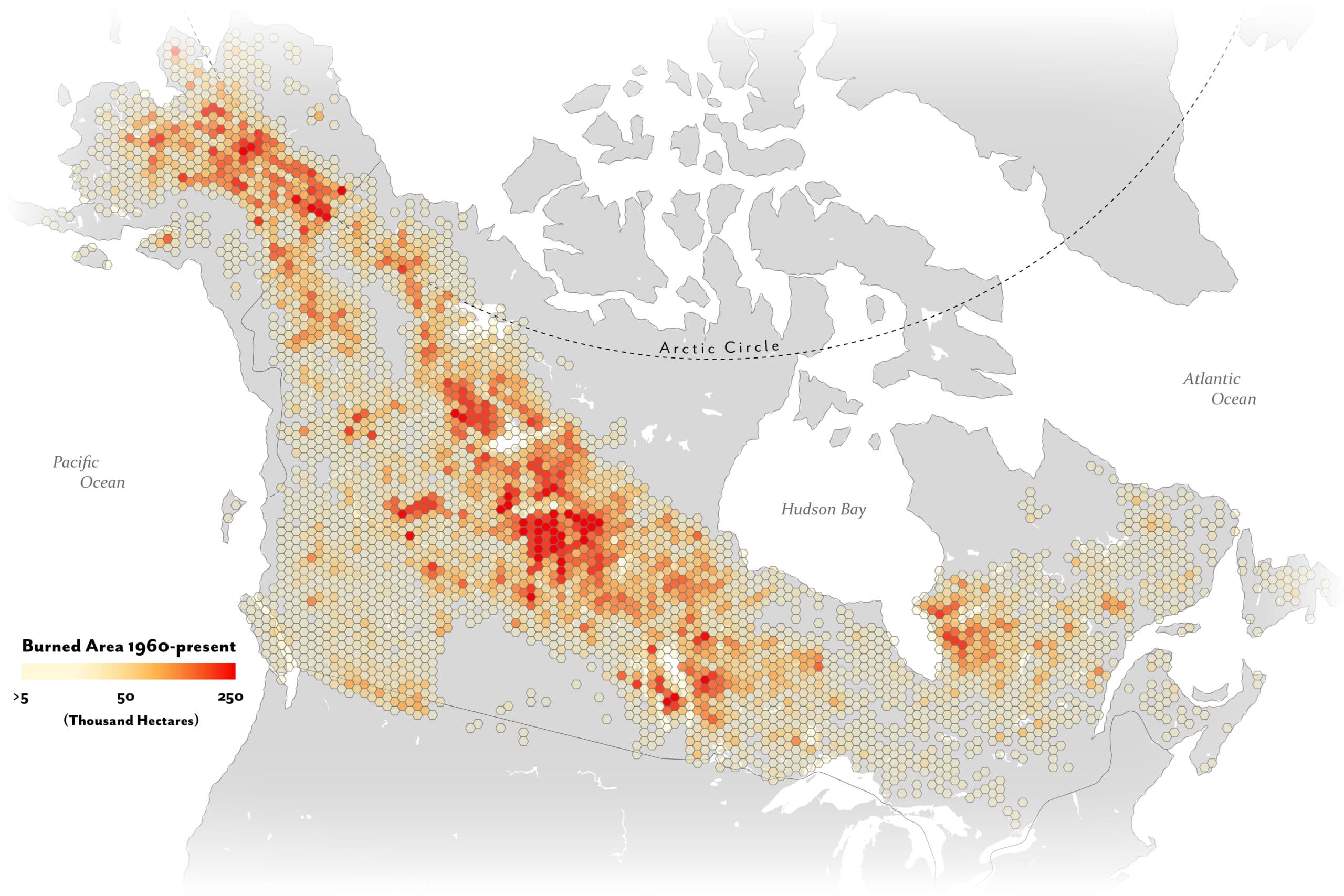
Key points
- The size, severity, and frequency of boreal forest fires have been increasing in response to climate change, a trend that is expected to continue and likely accelerate. These changes have the potential to add enormous amounts of carbon to the atmosphere, most of it having been locked up in soil for decades to millennia.
- Increasingly severe wildfires can also change the structure and composition of the re-growing forest (from evergreen to deciduous trees in North American boreal forests) as well as rapidly degrade permafrost.
- Current climate models that inform national and international policies like the Paris Agreement do not incorporate the climatically-relevant feedbacks from high latitude fires, including immediate carbon emissions due to soil combustion and longer-term emissions from permafrost thaw and large-scale ground collapse (thermokarst formation).
- On the order of 50–90% of all greenhouse gas emissions due to fires in boreal forests come from the deep organic-rich soils, which are not accounted for in climate models. Hence, the models that guide policy are under-informed and underestimate the positive feedbacks to climate change in boreal and arctic regions.
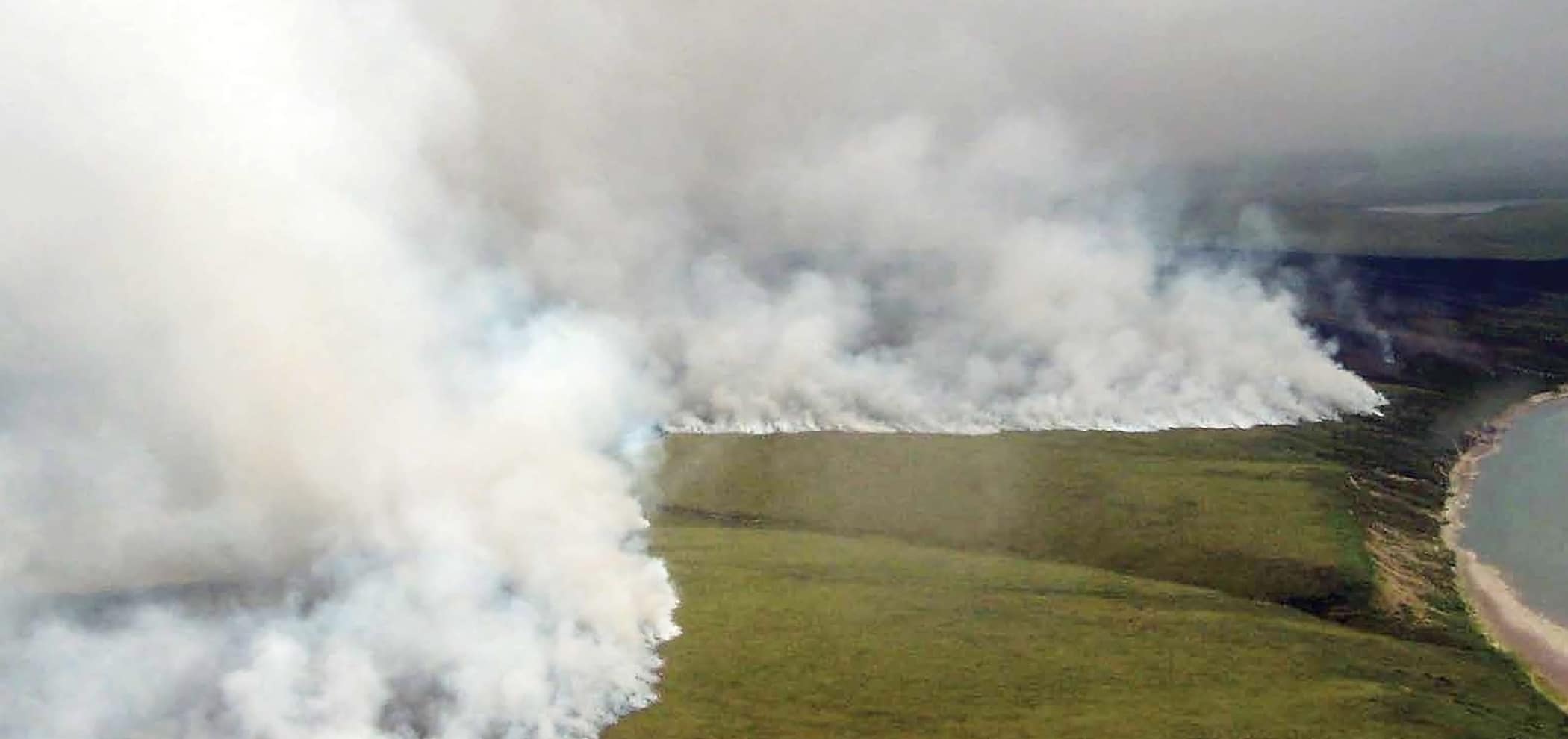
Above: map by Greg Fiske
Climate feedback mechanisms for fires
Lightning
- In northern latitudes, lightning is the ignition required for fires.
- Warmer weather leads to drier and more flammable fuels in the forests. When lightning strikes such an area, it is likely to ignite a fire.
- Lightning ignitions have increased since 1975. 2014 and 2015 wildfire events coincide with a record number of lightning ignitions and high levels of burning near the northern tree line.
- In addition to releasing carbon to the atmosphere, increasing numbers of fires in the tundra-forest ecotone expose favourable seedbeds and may accelerate northward forest migration, resulting in more convection, lightning, fires, and carbon releases from organic soils.
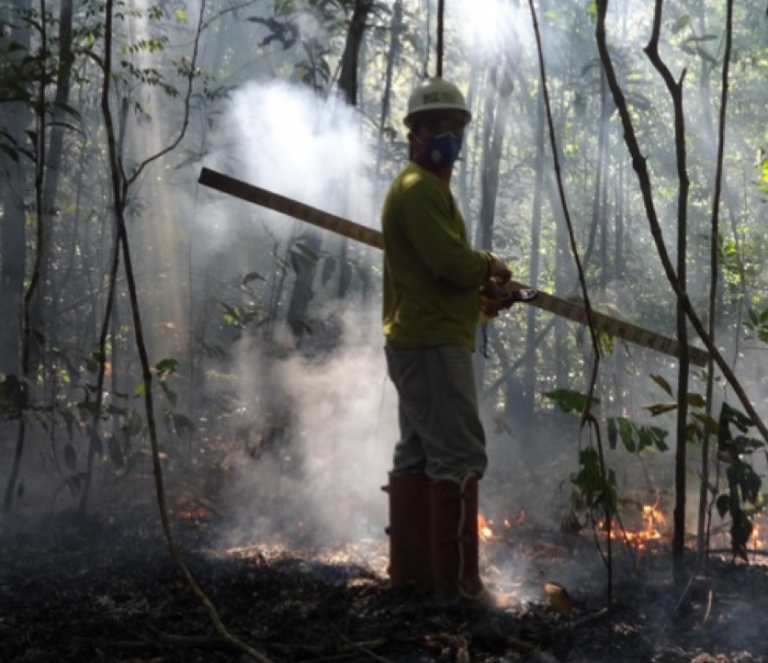
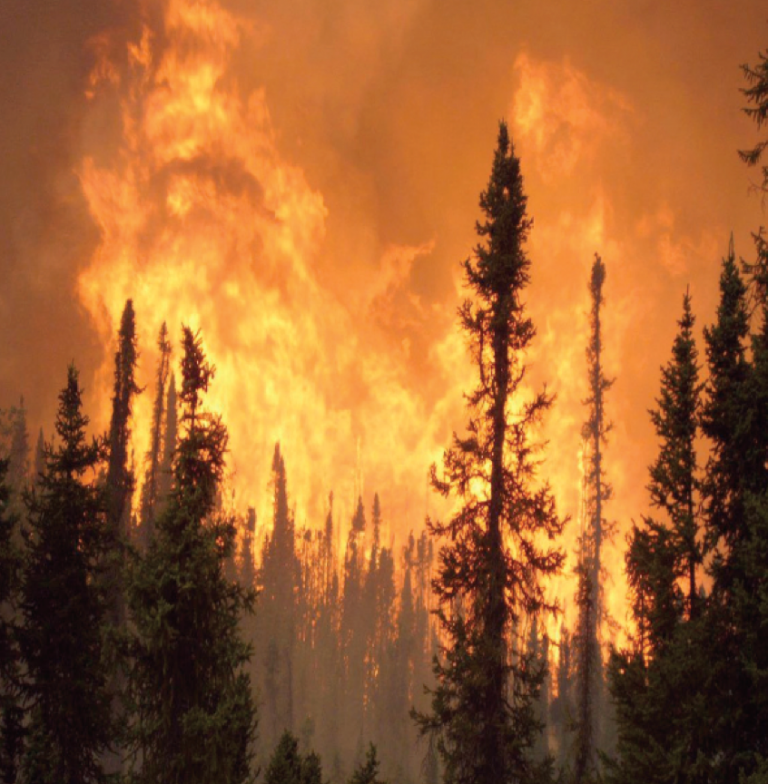
Left: A lightning-caused wildfire burns in Alberta, Canada. © The Government of Alberta
PERMAFROST
- The arctic tundra and boreal forests have accumulated a vast pool of organic carbon, twice as large as the atmospheric carbon pool and three times as large as the carbon contained in all living organisms. The vast majority of this carbon is contained in organic-rich soils, much of this being permanently frozen (i.e., permafrost).
- The soil organic layer acts as an insulator for the permafrost below.
- Severe fires decrease the thickness of the soil organic layer, reducing the insulation and causing the permafrost to thaw.
- Thawing permafrost leads to microbial decomposition, emissions of CO2 and CH4 to the atmosphere, and the transition from a historic Arctic-boreal carbon sink to a carbon source. This will further climate warming and generate drier fuels, more severe fire weather, and increased lightning ignitions, thus forming a globally-significant positive feedback loop that is unaccounted for in the Earth system models that inform global climate policy.
Heat Wave Scorches Sweden as Wildfires Rage in the Arctic Circlewas the headline of the New York Times article in July 2018.
News updates
Wildfires are a rare phenomenon in Sweden, but the spring and summer of 2018 were unusually hot and dry. Water levels in lakes were low, rivers were close to running dry and water shortages were prevalent. Rainfall was the lowest since record keeping began in the late 19th century. Temperatures usually never crossed 30 degrees Celsius in Sweden. In the city of Uppsala, temperatures reached 33 degrees Celsius and topped 30 degrees in central and southern parts of the country.
The Lapland town of Jokkmokk which lies in the Arctic circle had to deal with 8 fires in 12 days, which burned a boreal forest the size of 900 football pitches. In July itself, Sweden was hit by more than 60 forest fires across the country. The acting chief of the fire station in Jokkmokk, Gunnar Lundström said they had never experienced so many big fires in such a short time. The fire chief of Jamtland in northern Sweden said the fire started with lightning storms. One fire consumed about 12,355 acres of forest and other terrain. Patrik Forsgren, who serves in Sweden’s home guard said that lighting started three forest fires near Ljusdal in central Sweden.
Swedish authorities required help from Norway, France and Italy to contain and combat the fires.
